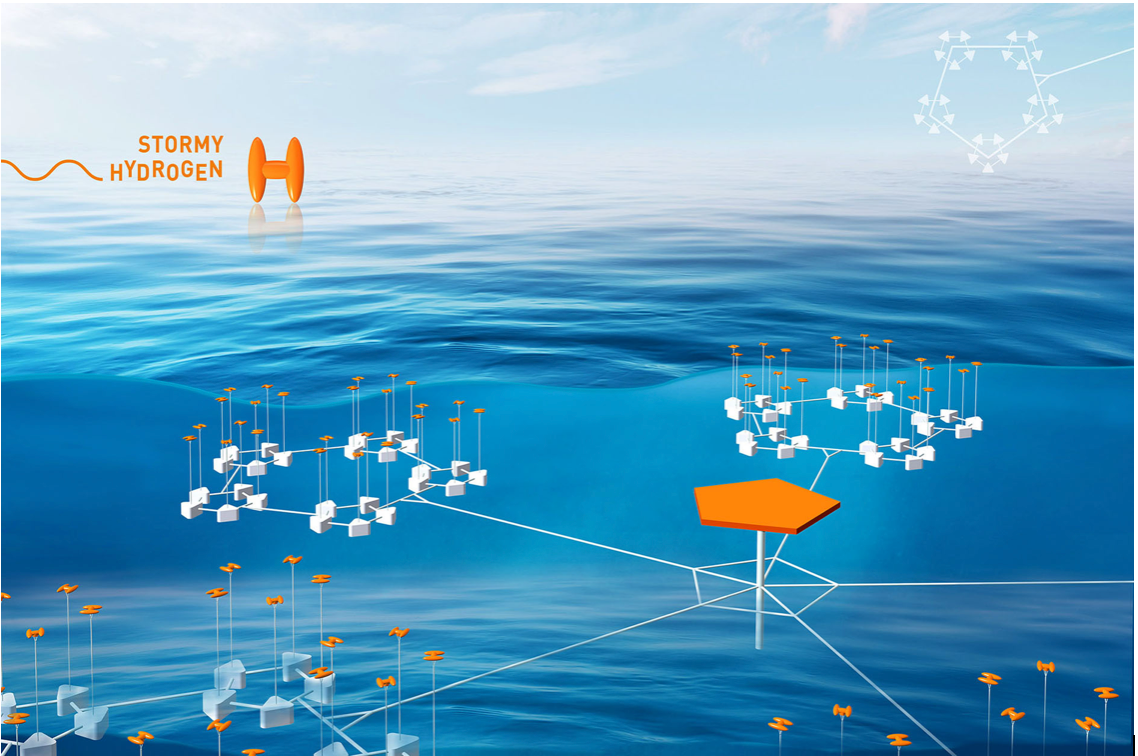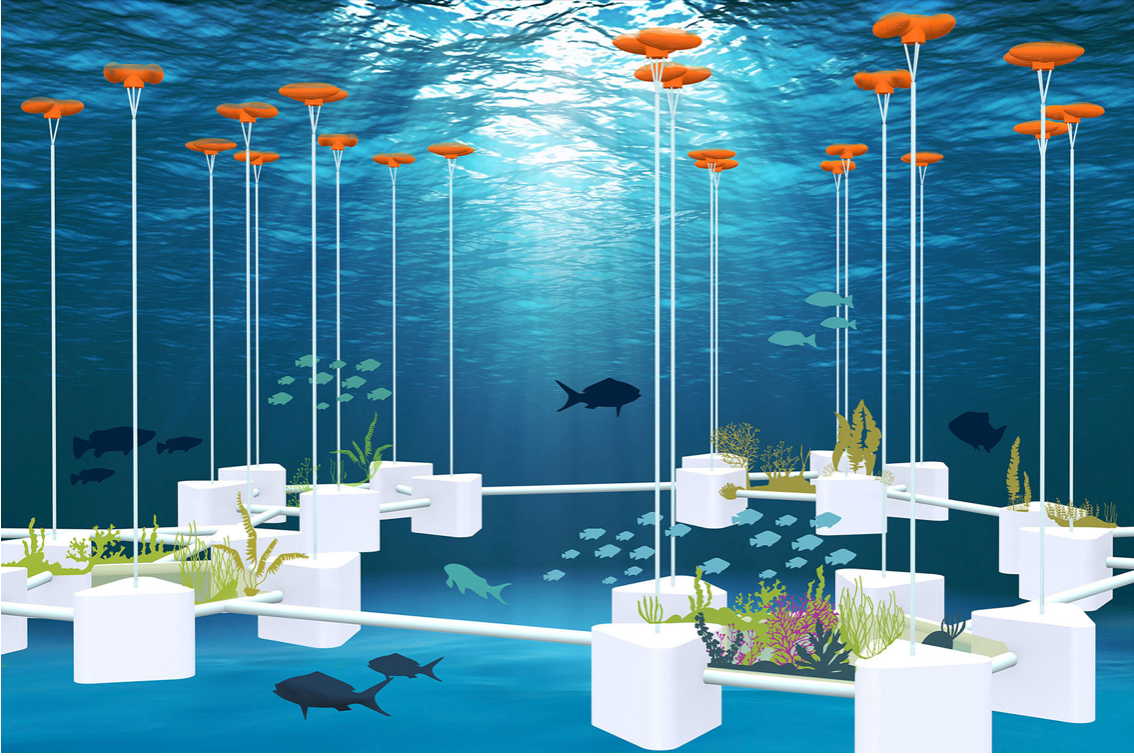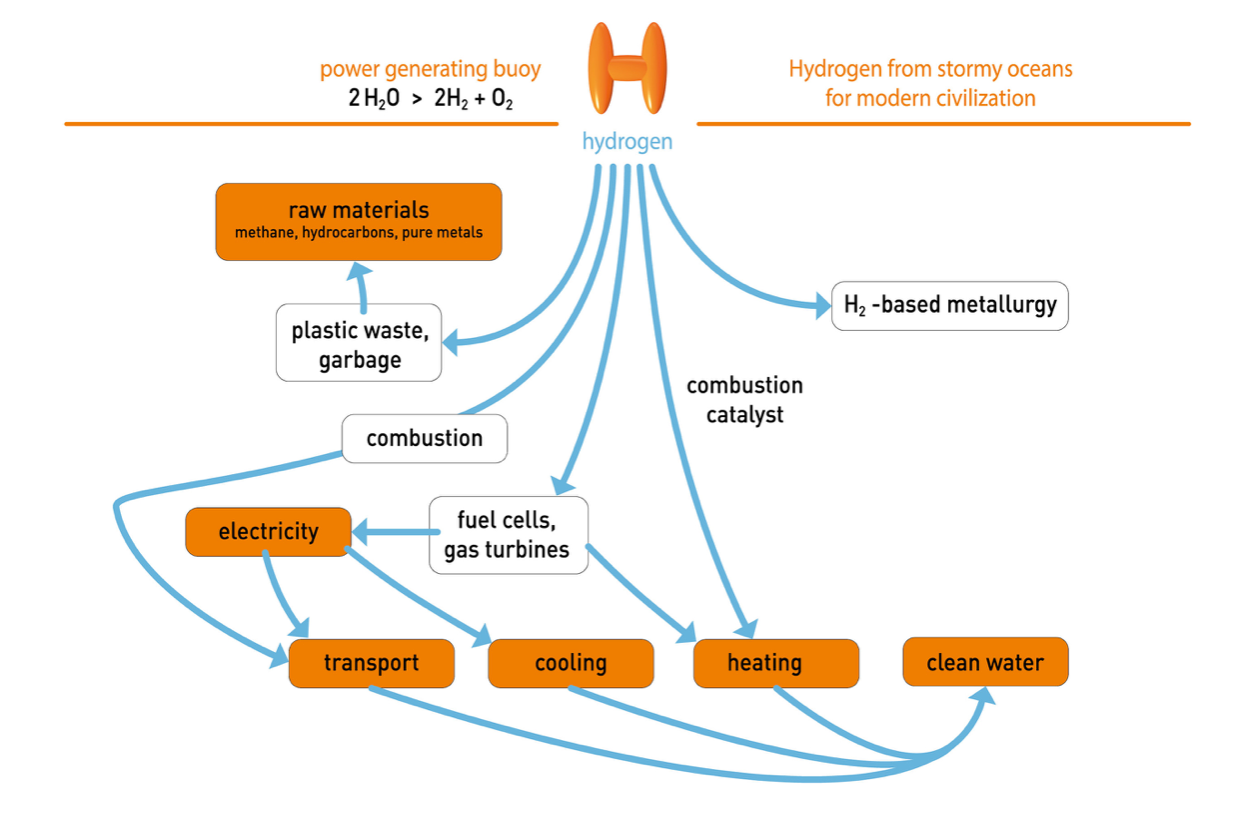
There is presently a lot of discussion on the most viable path towards a sustainable energy future. The problems are that the energy demand is growing, that much more energy is needed than for mere electricity generation and that the presently exploited photovoltaic and wind energy sources cannot so easily be scaled up. Nuclear energy is again considered as an alternative, but 20.000 reactors would have to be operated worldwide for a reasonable energy share and they are expensive and environmentally and politically sensitive. An obvious alternative would be to follow nature’s strategy with correspondingly adapted modern technology1 and to do it on a large scale. Inexpensive and abundantly available hydrogen from stormy oceans (as a technical substitute for hydrogen via photosynthesis) would be the obvious key towards global sustainability and a balanced carbon exchange with the atmosphere1,2. This does, for a first important step, not require technological breakthroughs. It only needs the determination to further develop and adapt existing technology. This is achieved by placing the power conversion and electrolysis technology required for hydrogen production half a sea wavelength, 50 m, below the sea surface while only the energy-harvesting floats are exposed to the stormy sea surface. Hydrogen is transported to its destination via submarine pipelines and existing fossil energy transport infrastructure, similar to what is already happening in many places with natural gas. Since it basically mimics natural water splitting, inexpensive hydrogen would make energy technology clean and would additionally allow innovative new energy applications which are oriented on examples from nature1.
To produce hydrogen sustainably it is necessary to use primary solar energy (light) or secondary solar energy (wind, hydropower, waves) for decomposing the water via electrolysis. Thus, its production costs are automatically determined by the sustainable production of electricity, but due to the costs of electrolysis technology, these costs are almost doubled. At present, renewable hydrogen costs more than three times as much as hydrogen produced from fossil natural gas. Hydrogen production must occur in places where renewable energy is available as concentrated as possible, which reduces technology and materials, and thus can be harvested cheaply, and where sustainable electricity is not a tradable competing product.
The most obvious strategy would be to go where on earth the highest density of sustainable energy is found. It is the stormy seas 2). It is a fact that in the direction of higher northern and southern latitudes, waves of 4 – 6 m in height are almost constantly prevalent. Their energy density is 80 times higher than the energy density of maximum solar radiation for photovoltaic systems. Since mechanical wave energy can be collected day and night and much more efficiently than solar energy, this means that in these seas, compared to photovoltaic technology, about 480 times more energy per square meter is available and recoverable. This is a huge potential which, if mastered technologically, promises affordable energy and more energy in the form of hydrogen than mankind currently consumes. An available capacity of up to 50 terawatts (50.000 gigawatts) seems possible.
There are currently around 30 experimental wave power plants worldwide that generate electricity near the coasts. The difference would be that hydrogen will be generated and the whole technology will not work at the sea surface, where storms appear, but half a sea wavelength, about 50 meters, below the sea surface in constantly calm water. The technology must be as simple, resistant and reliable as possible for autonomous operation. Magneto-mechanical power conversion is the choice, with a strong magnet moving without direct contact within a coil, generating electricity. Advanced magnetic materials are available and there is significant opportunity for further progress. Only the floats that the waves carry up and down are exposed to the storms. They move the magnetic rods that generate the periodic currents in the coils (stators). They are rectified to direct current, which releases the hydrogen from sea water2). Hydrogen, generated at available highly catalytic electrodes is collected and conducted away under water. Oxygen is released and may aid in fertilizing oxygen-poor seawater. Traces of chlorine may initially pose some problem, but could be discarded deeper under water where harmless products are finally formed. Highly catalytic oxygen evolving electrodes are available and can further be improved. Nature in photosynthesis has succeeded in avoiding side reactions during oxygen evolution. There are opportunities to learn.
The underwater wave powered electrolysis plants, which are based on largely known technology, would be lowered segment by segment into the sea. Fractal, self-similar geometries of hydrogen producing wave power plant patterns aid towards energy efficiency and optimized hydrogen harvesting as well as towards a good accessibility for logistics and maintenance. A look at present fossil fuel technology and transport in rough sea environments convinces that the challenges for the proposed project should be manageable. The development costs for stormy ocean hydrogen technology are estimated to remain below that of a single nuclear power plant and abundant clean energy supply for the entire world would be available for an unlimited future. The time scale for implementation would be similar as that for completing a new nuclear power plant.



1.) Tributsch, H.,
a) 2008, Erde, wohin gehst Du? Solare Bionik-Strategie: Energie-Zukunft nach dem Vorbild der Natur. Shaker-Media, Aachen. ISBN: 978-3-86858-044-02
b) 2012, Energy Bionics: The Bio-Analogue Strategy for a Sustainable Energy Future, p.
415 – 464, in „Carbon-Neutral Fuels and Energy Carriers (N.Z. Muradov, T.N.
Veziroglo, eds) CRC Press, Taylor & Francis Group (2012), ISBN 978-1-4398-1857-2
2.) Tributsch, H, 2012, Hydrogen from stormy oceans, in : Sustainable Energy Harvesting
Technologies: Past, Present and Future (ISBN: 978-953-307-438-2)
http://www.intechopen.com/articles/show/title/hydrogen-from-stormy-oceans
Read further
Why is industrial hydrogen produced from natural gas and not by water electrolysis?
This post is also available in: DE (DE)